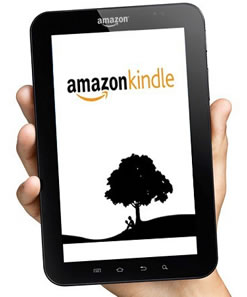Once again we're hearing that Amazon.com plans to introduce an Android tablet, and this time we have a size: it will feature a roughly 9-inch screen. It will not have a camera but will allow Amazon customers to easily watch videos, read electronic books, and listen to digital music they purchase or rent from the online retailer. The timing is reportedly before October, according to people familiar with the matter cited by The Wall Street Journal.
Furthermore, the Seattle-based company will reportedly release two updated black-and-white versions of its popular Kindle electronic reader in Q3 2011. The first will be a touch-screen device and the second will be an improved and cheaper adaptation of the current Kindle.
Last month, we heard Amazon could launch tablet models in August 2011 or September 2011, with targeted global sales of 4 million units for 2011. Quanta Computer would assemble processors developed by Texas Instruments, Taiwan-based Wintek's touch panels, and ILI Technology's LCD driver ICs. Amazon would also reportedly provide streaming movie services for users of its tablets.
Two months ago, a rumor talked about two different tablets before the end of 2011: an entry-level tablet codenamed Coyote (based on the dual-core Nvidia Tegra 2 platform) and a second tablet codenamed Hollywood (based on the quad-core Nvidia codename Kal-El platform, which is likely to be called Tegra 3).
The rumor that Amazon is looking to build a tablet has been around for a while but it started to gain steam three months ago, when it was suggested that Samsung would build an Android tablet for the online retailer. Amazon's president and CEO Jeff Bezos has noted that a potential Amazon tablet would be more likely to supplement than to supplant the Kindle.
The Kindle is the best-selling product on Amazon, and the company likely wants to keep pushing forward with it, but sporting a further reduced price tag. This would attract demand from the education and consumer market, while the more expensive and more powerful tablet would be able to take on the broader market outside of the e-book reader space. In addition to the Kindle ecosystem, the company has the Amazon Android App Store, its Cloud Drive service, and is in the meantime making sure to support its Kindle app on tablets.
